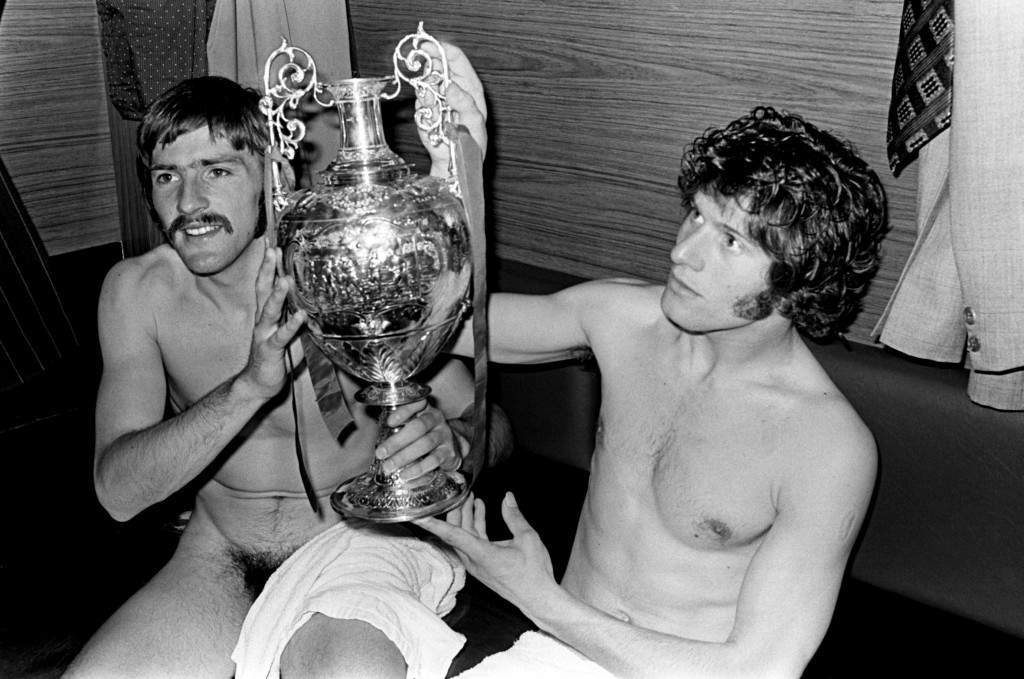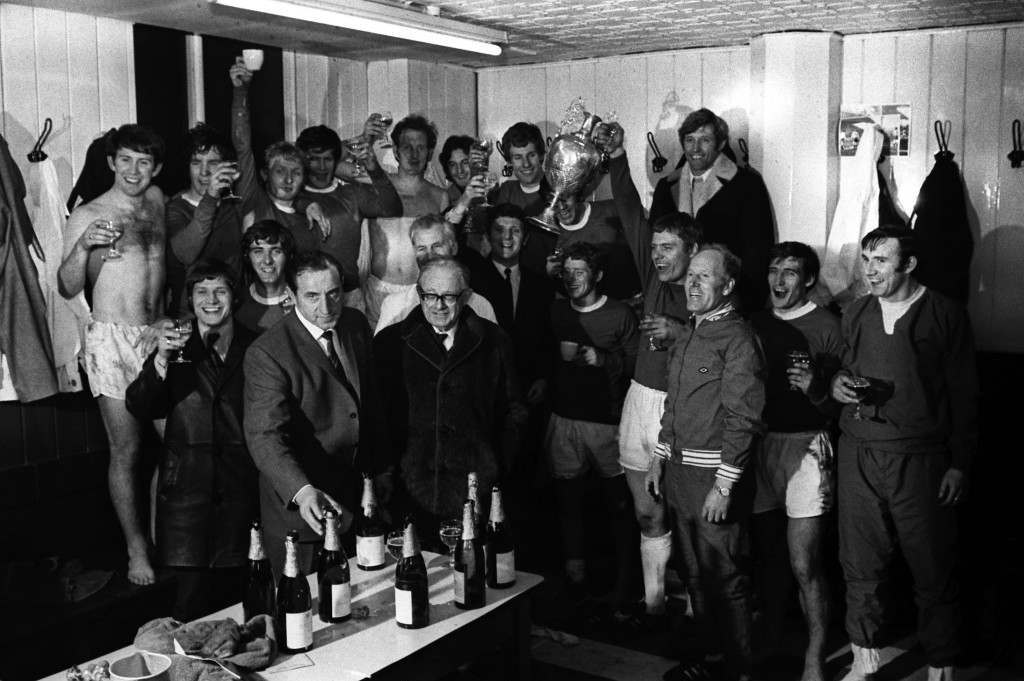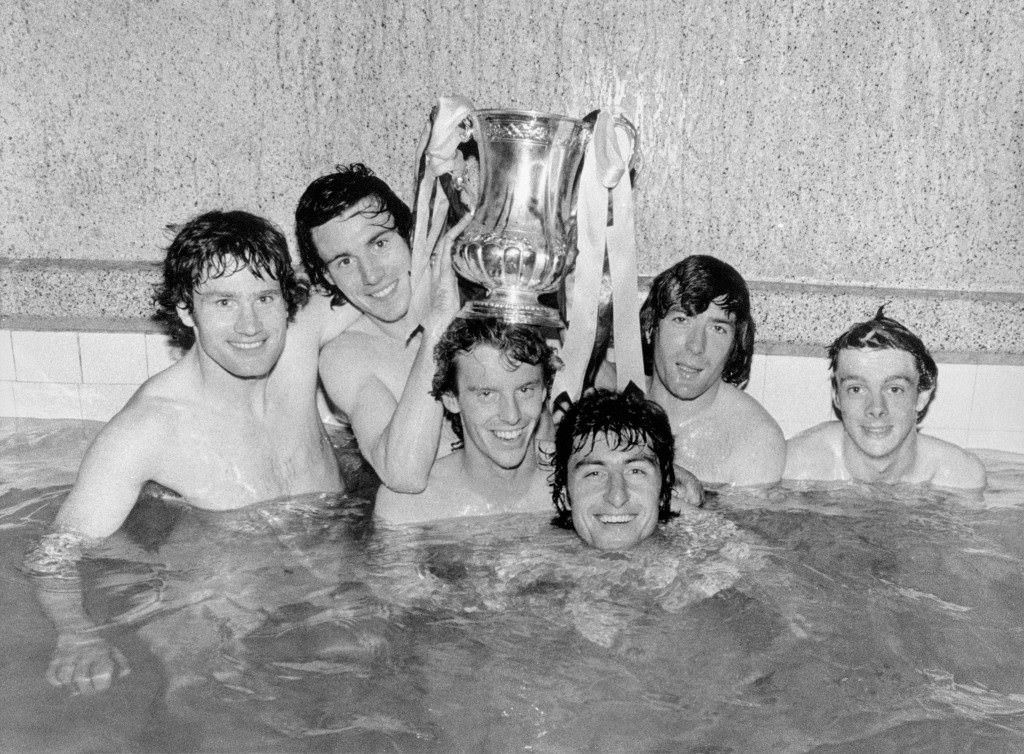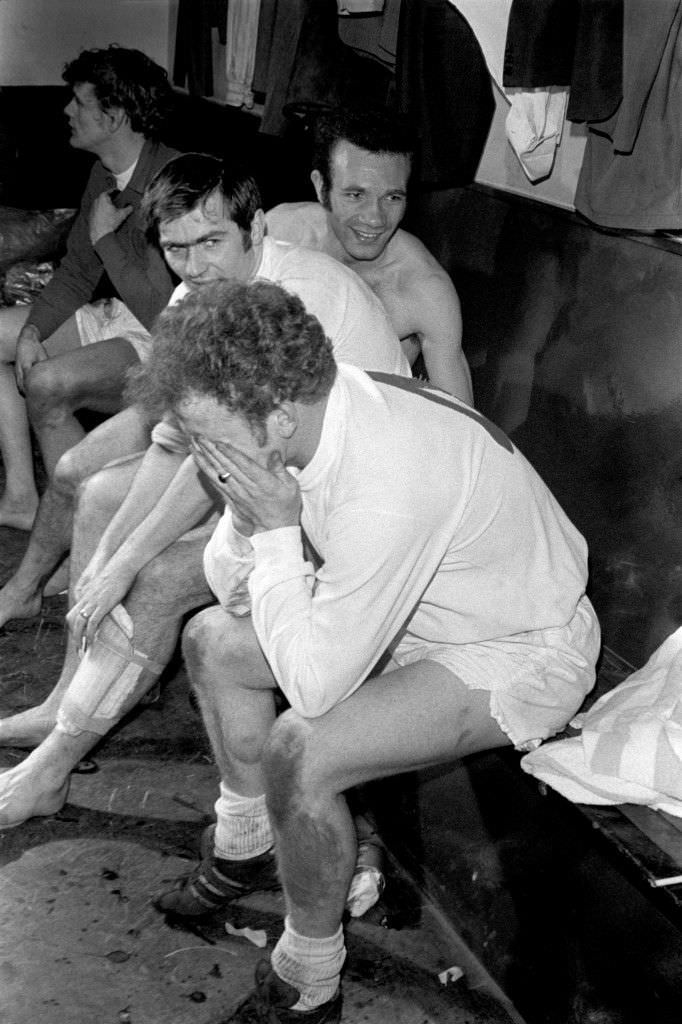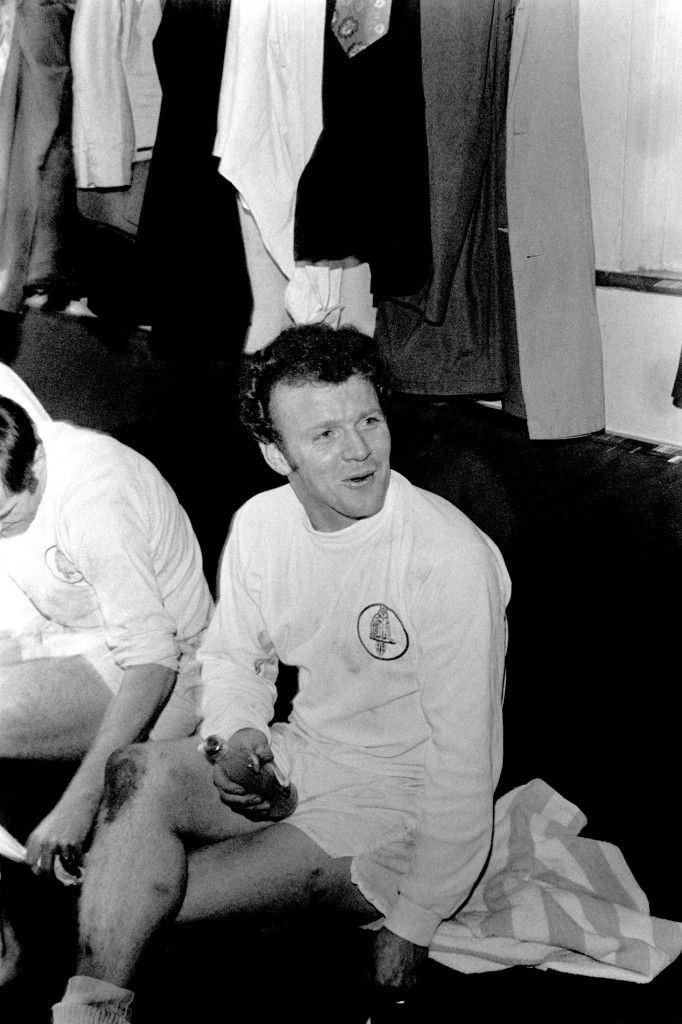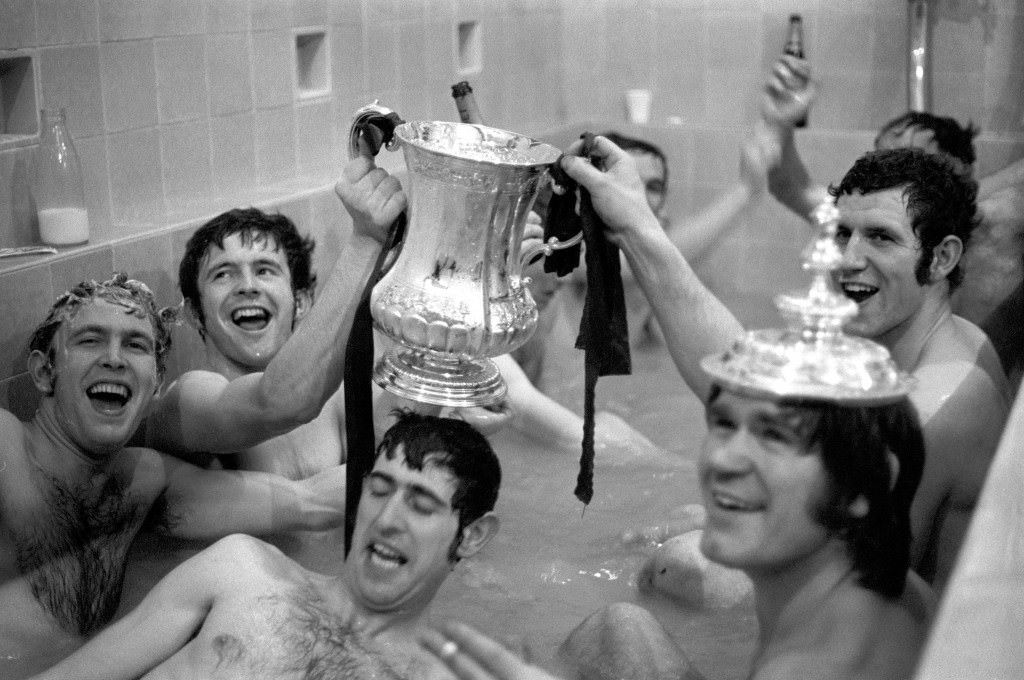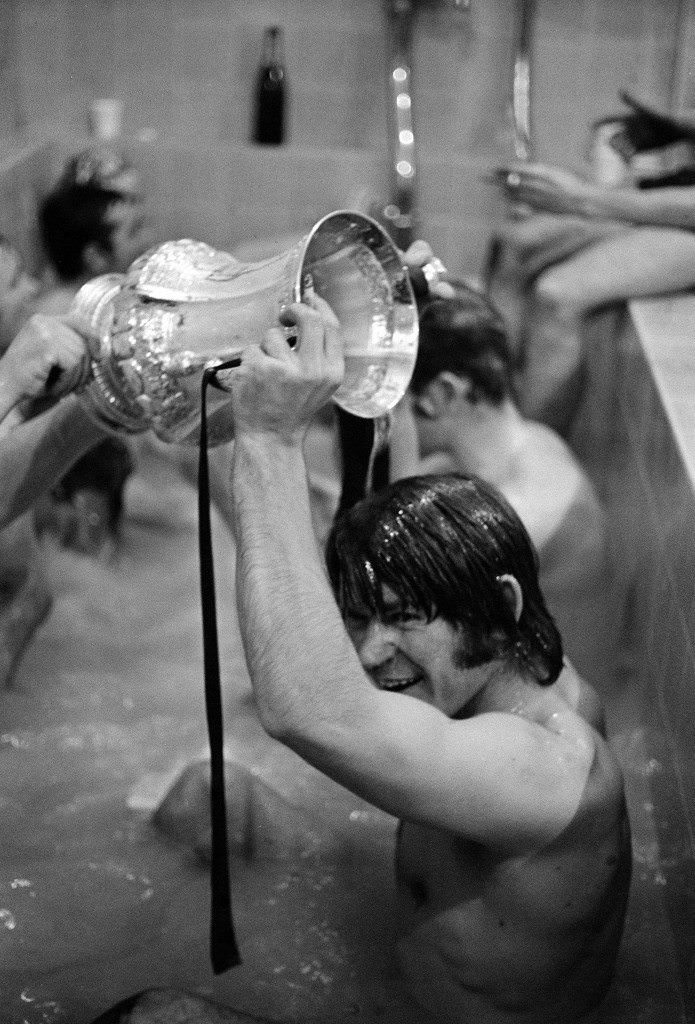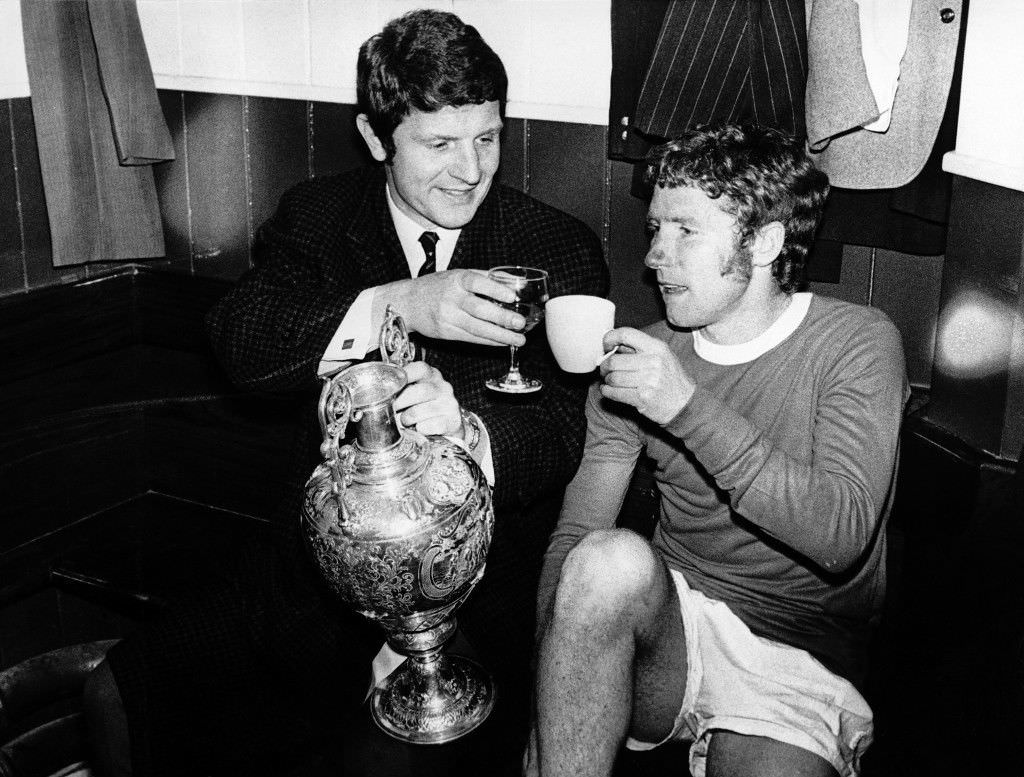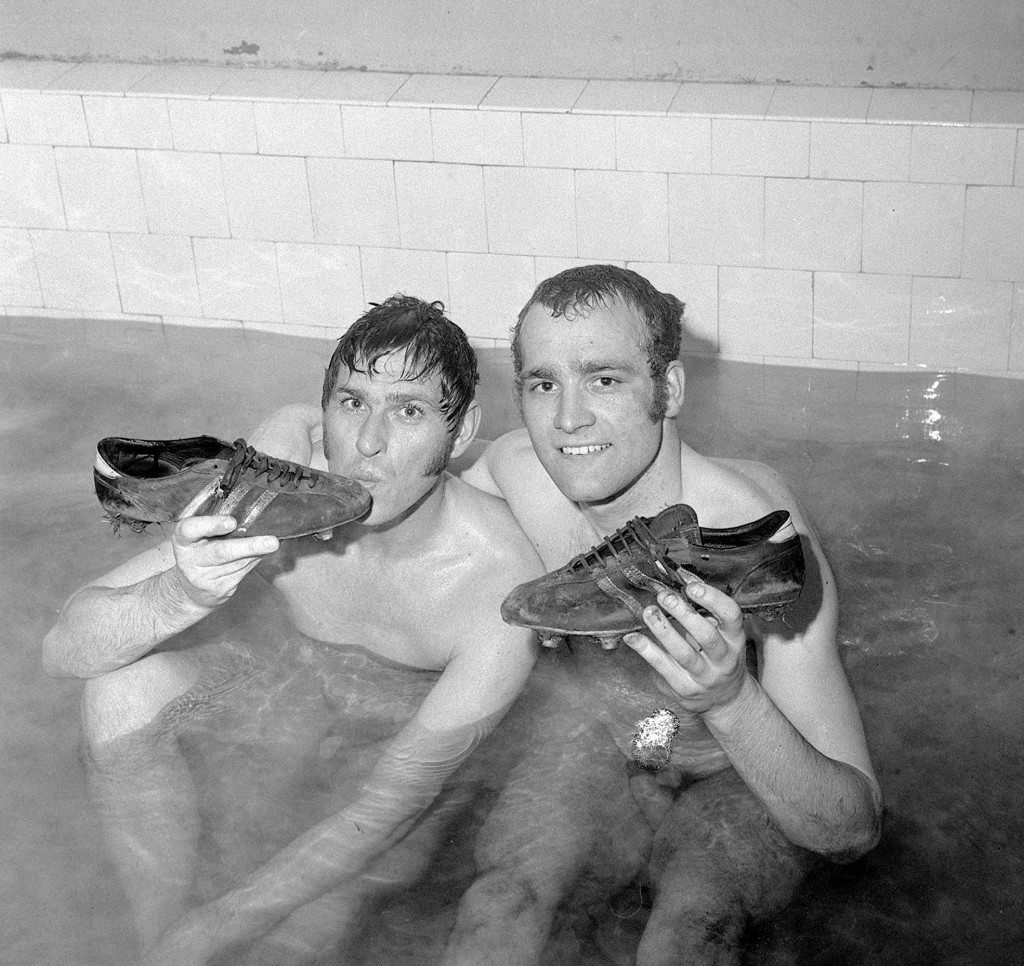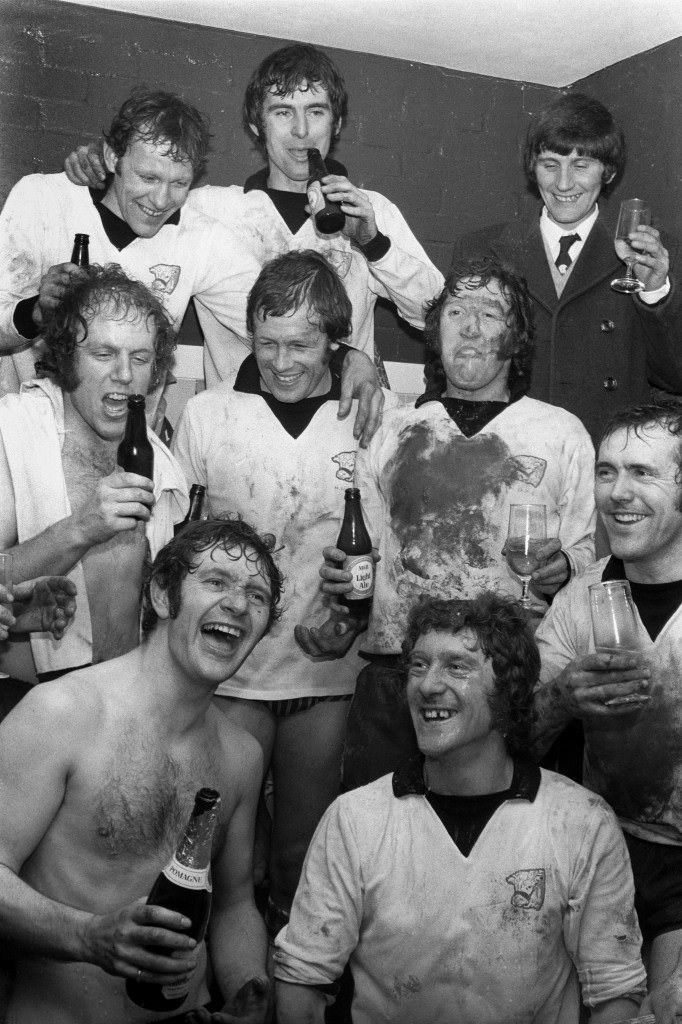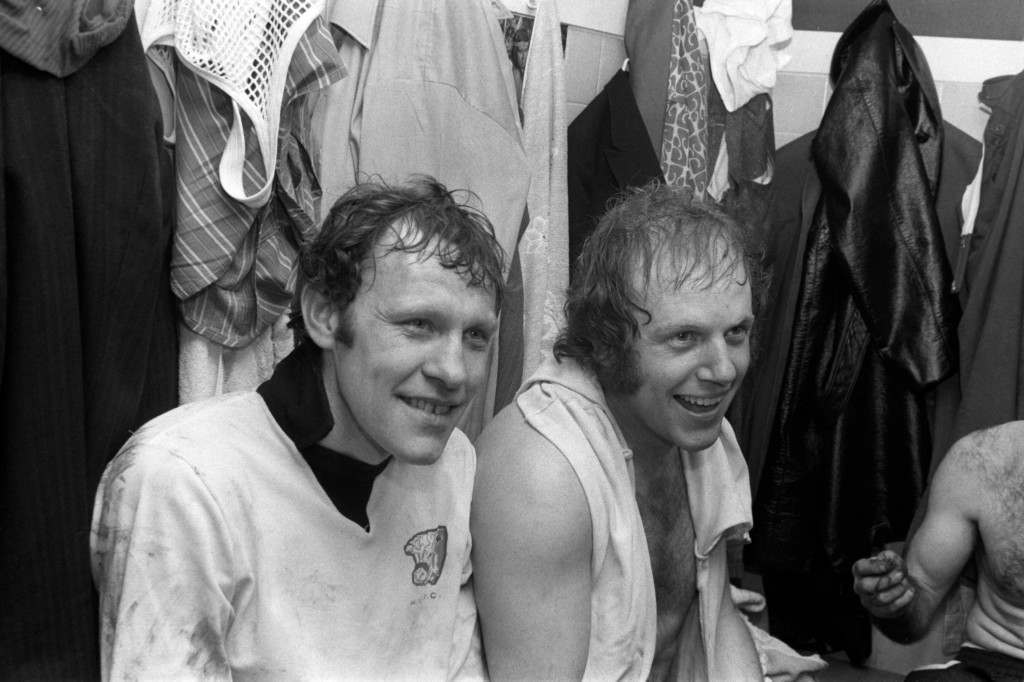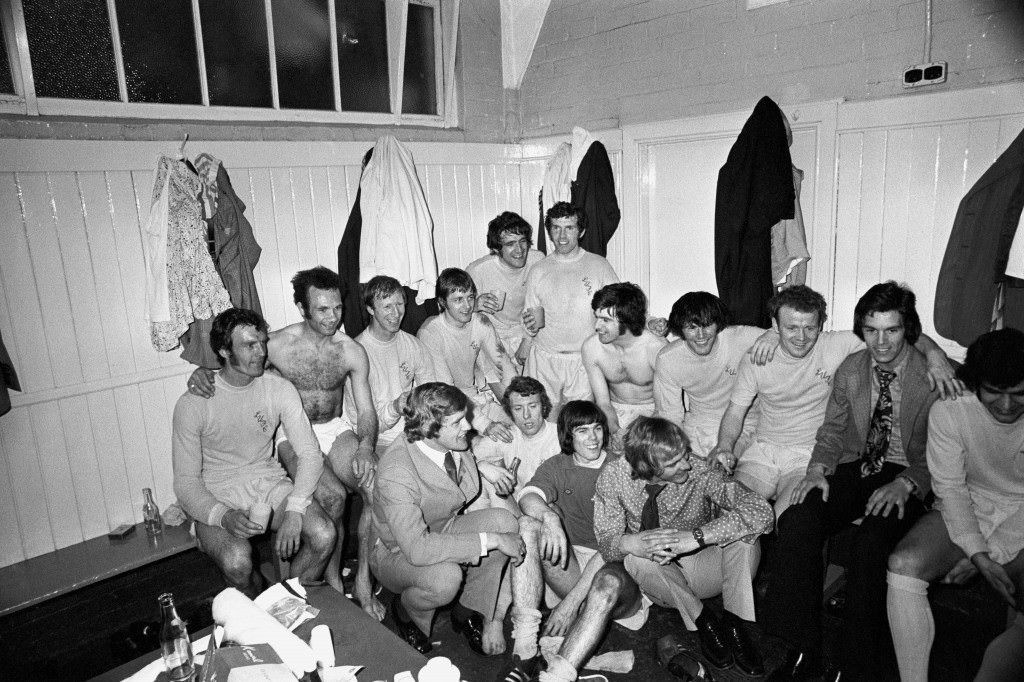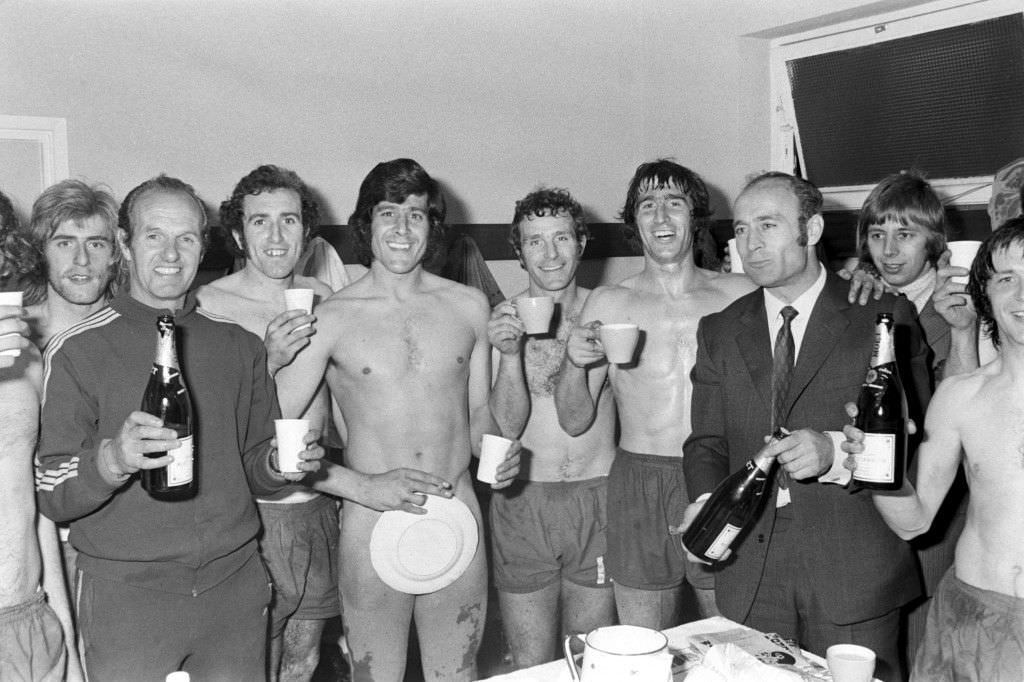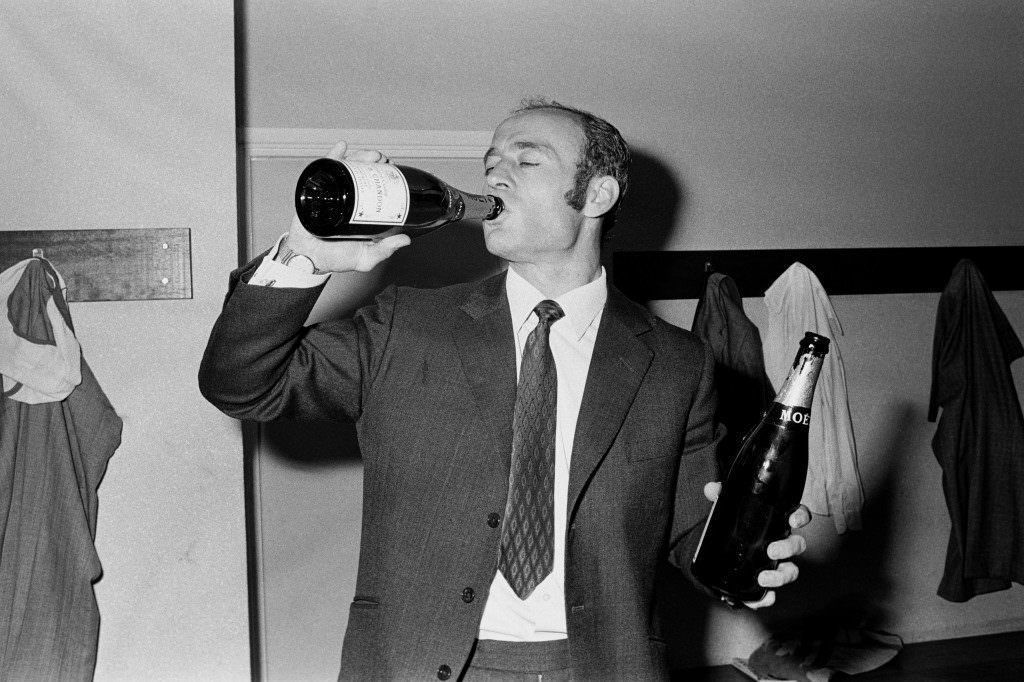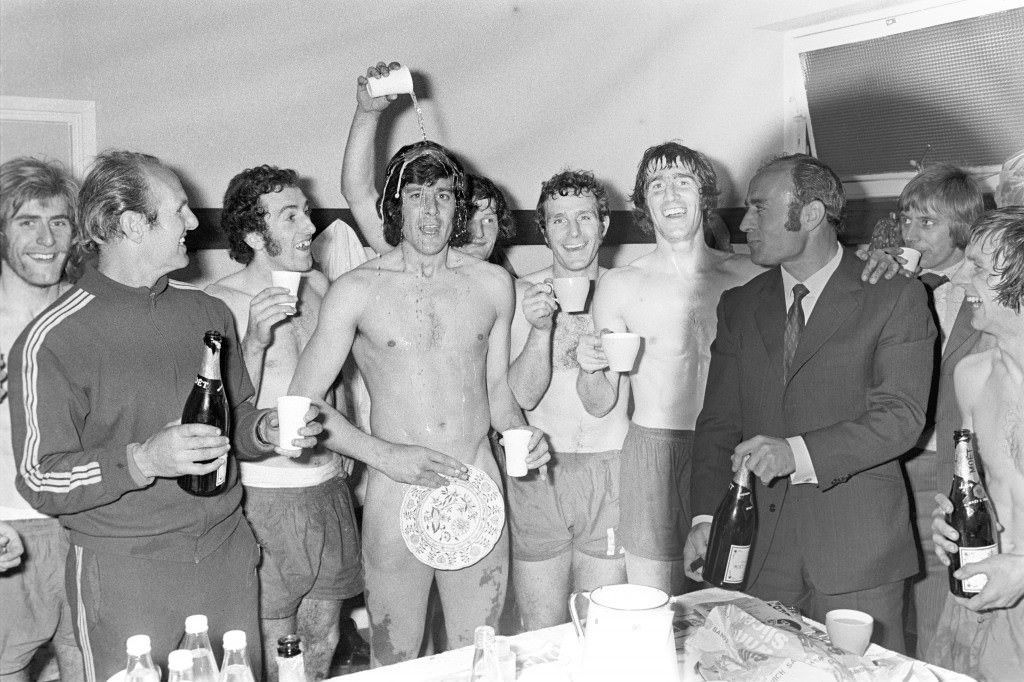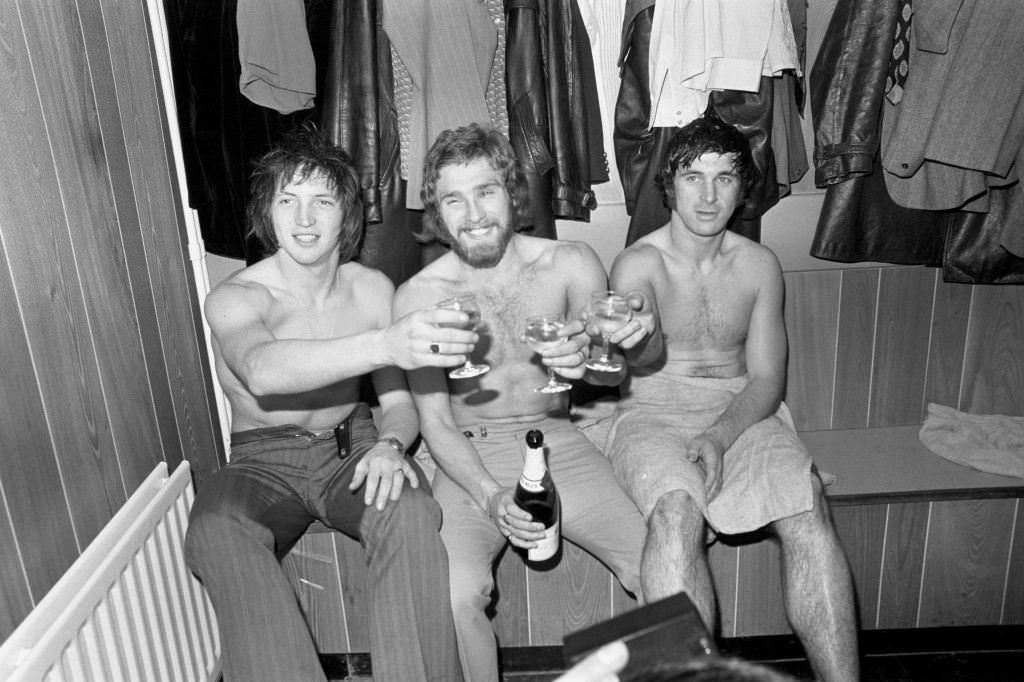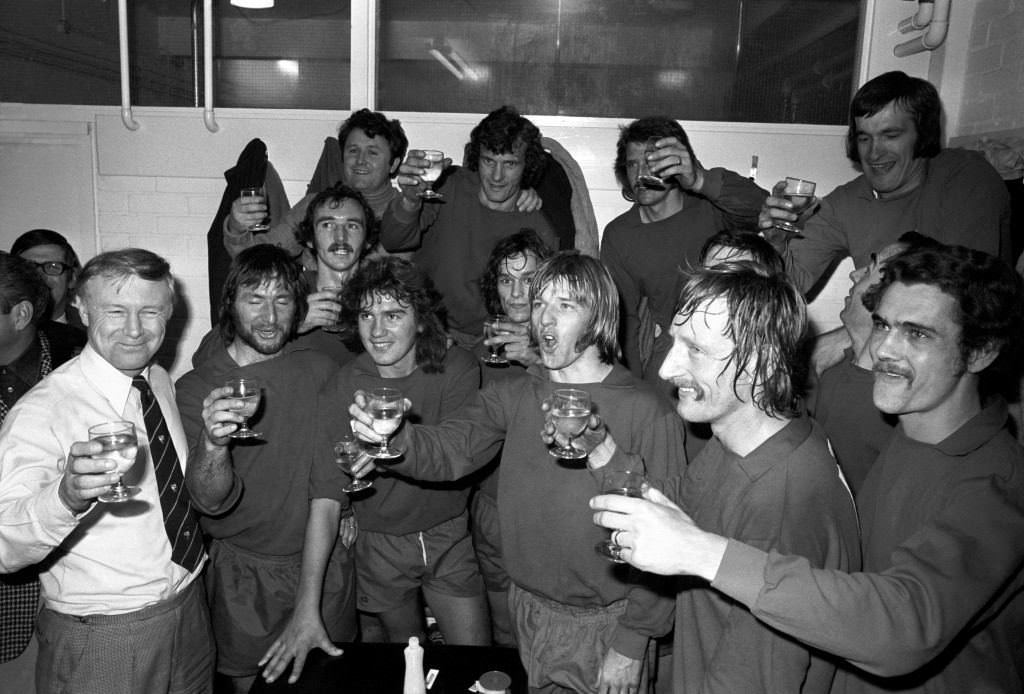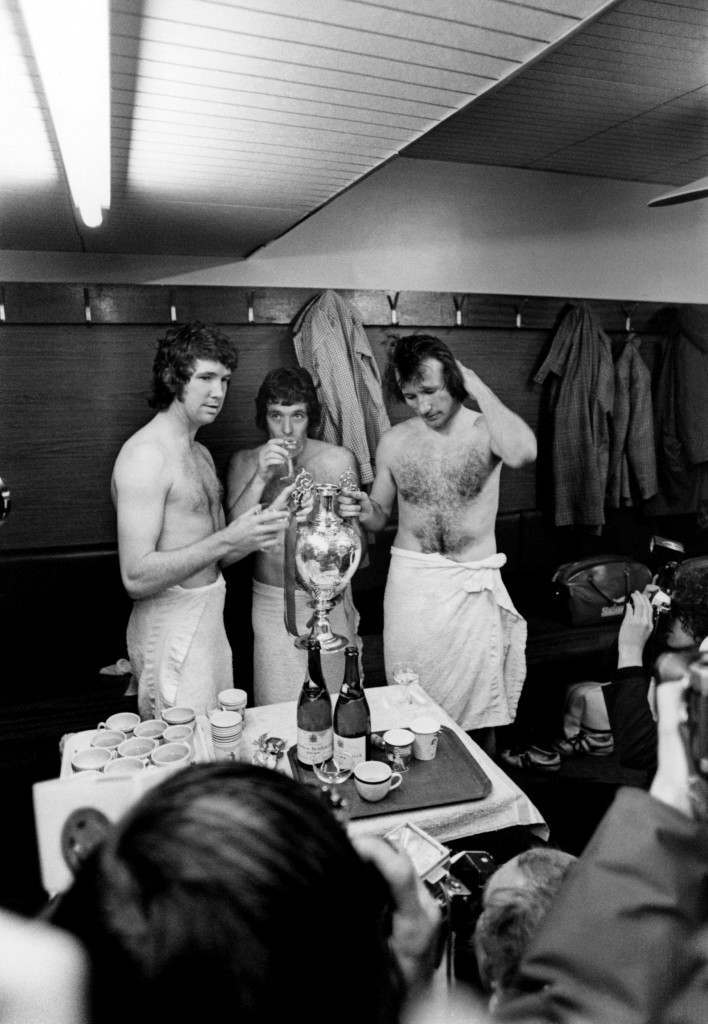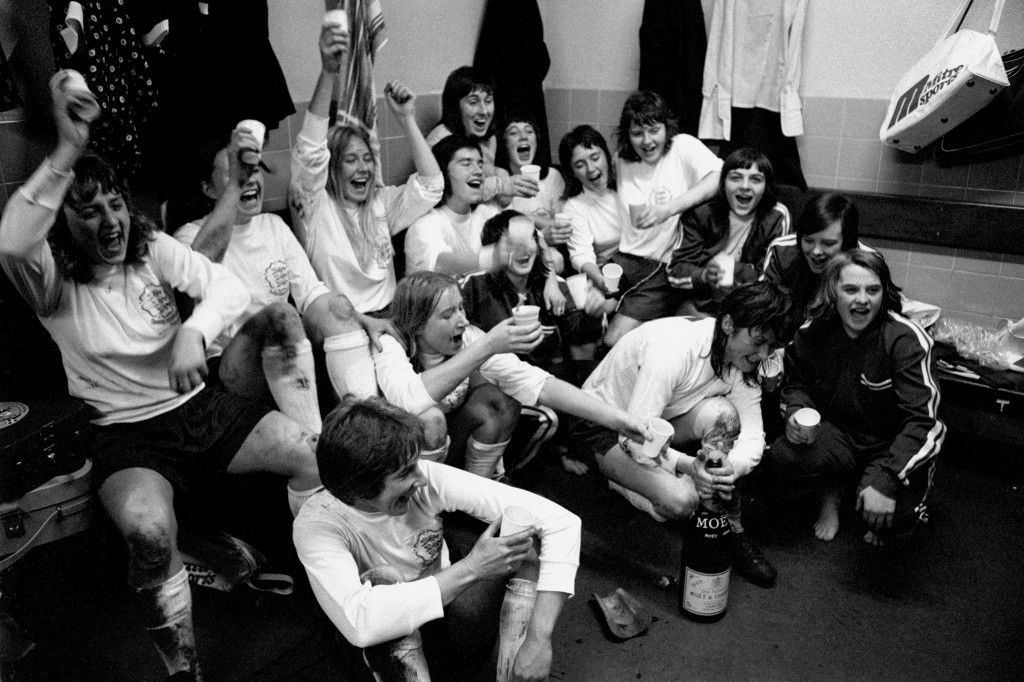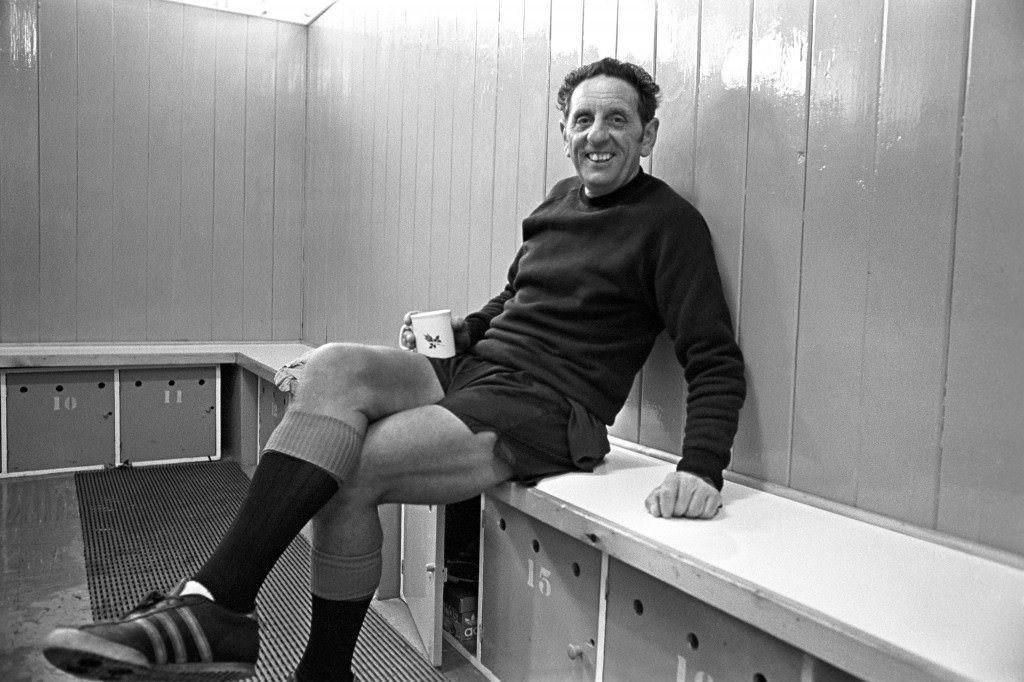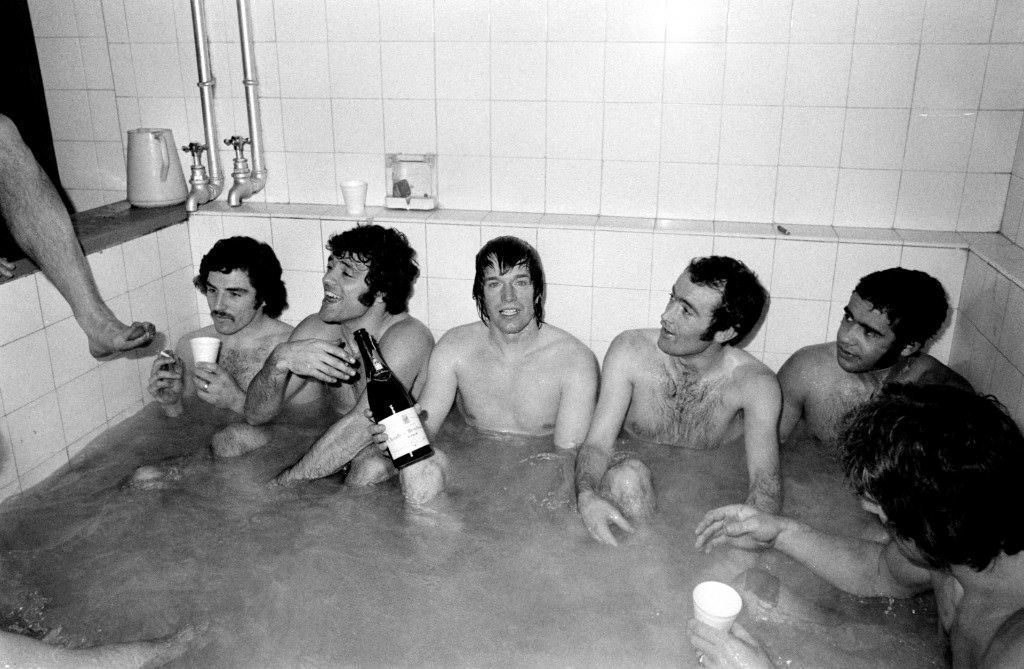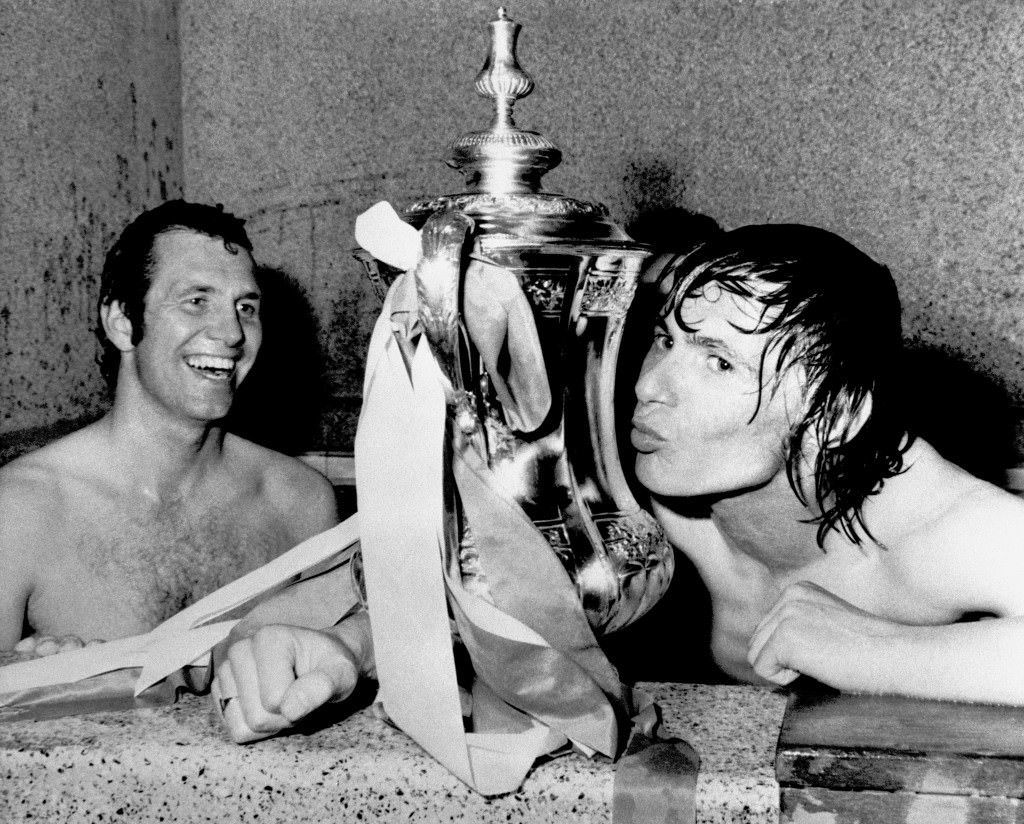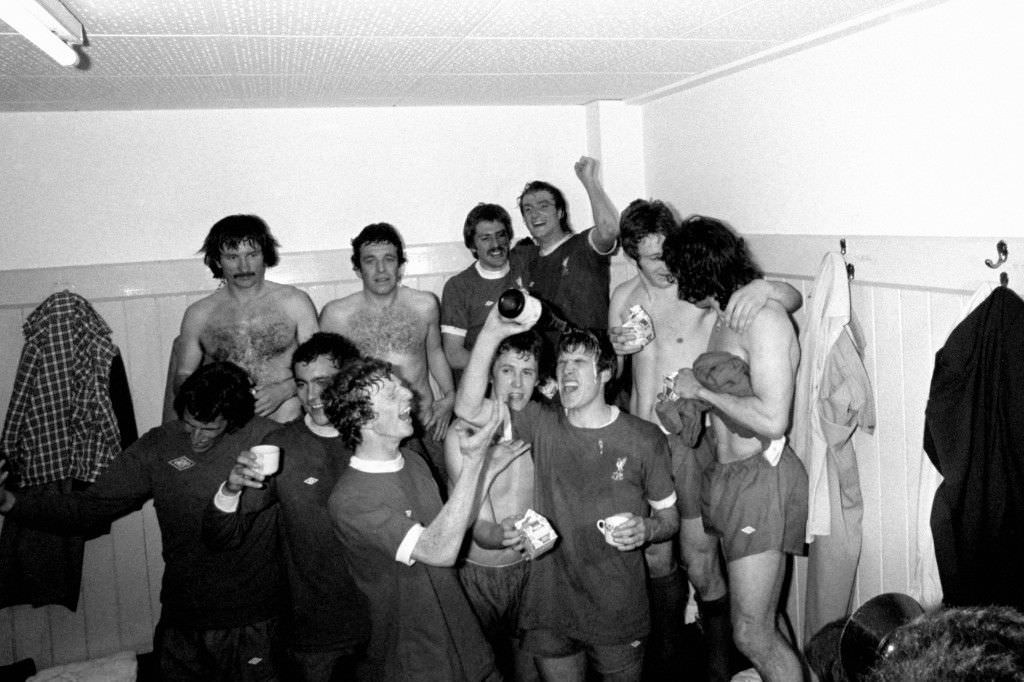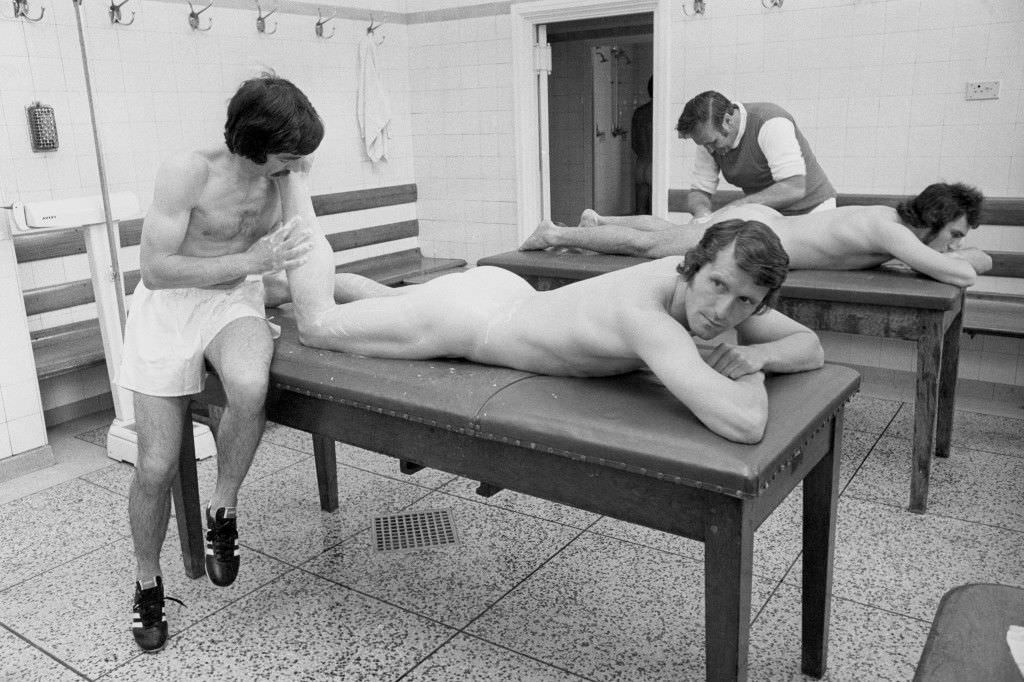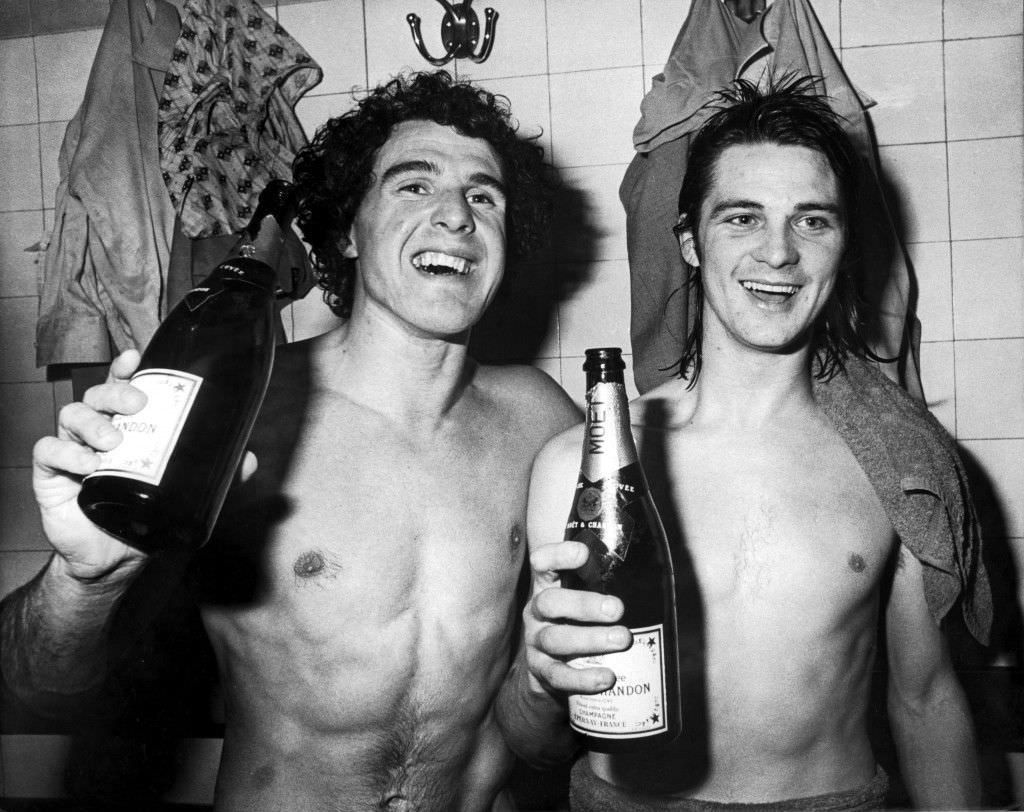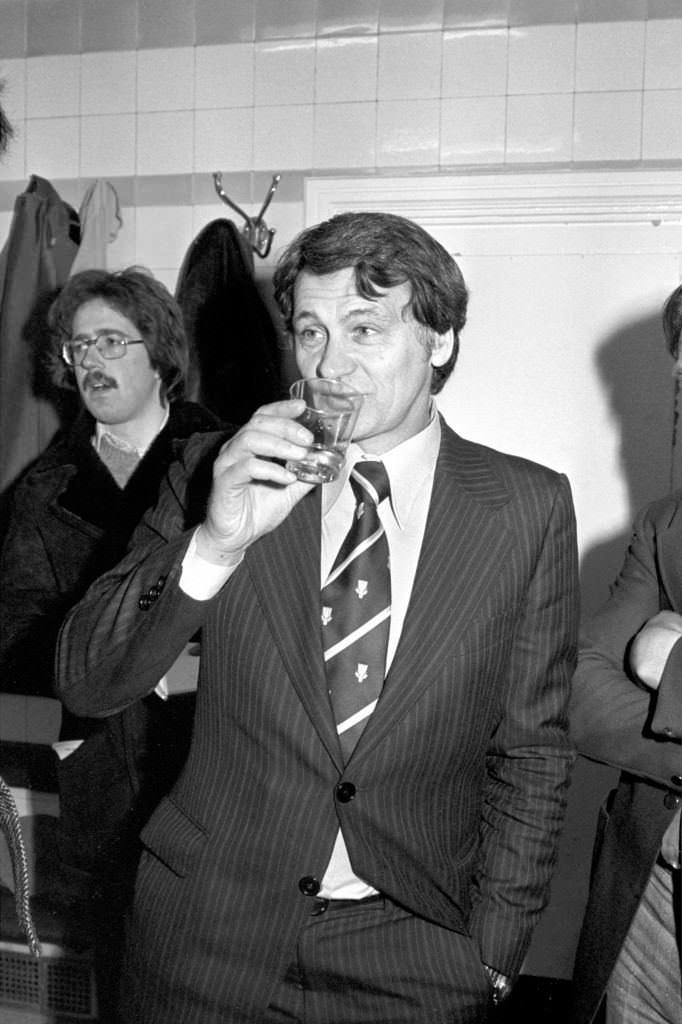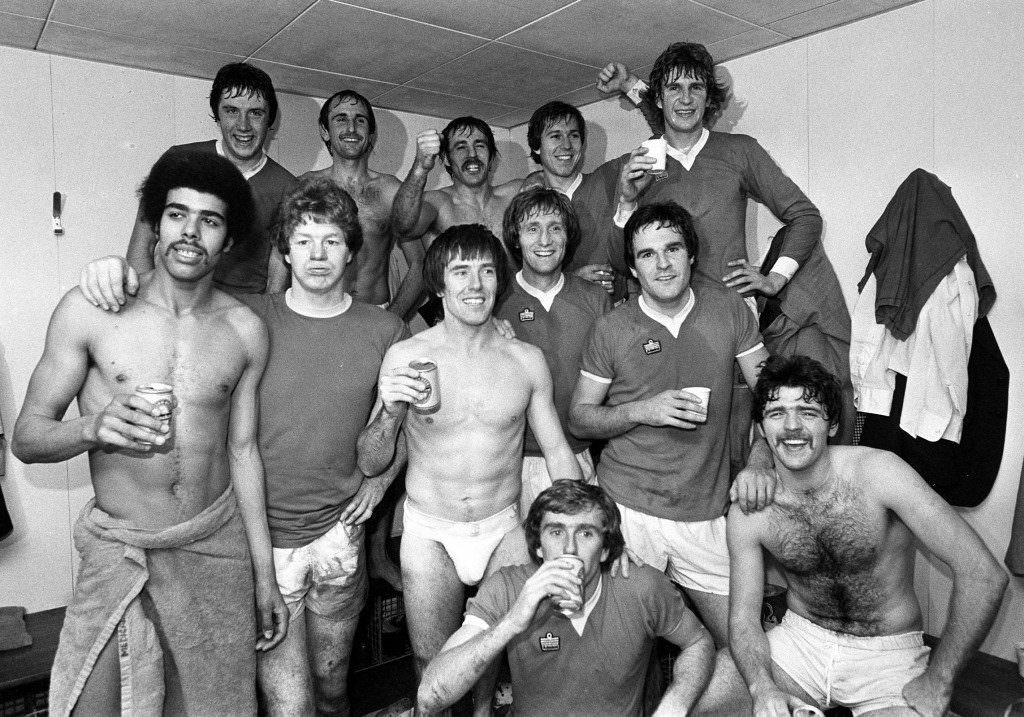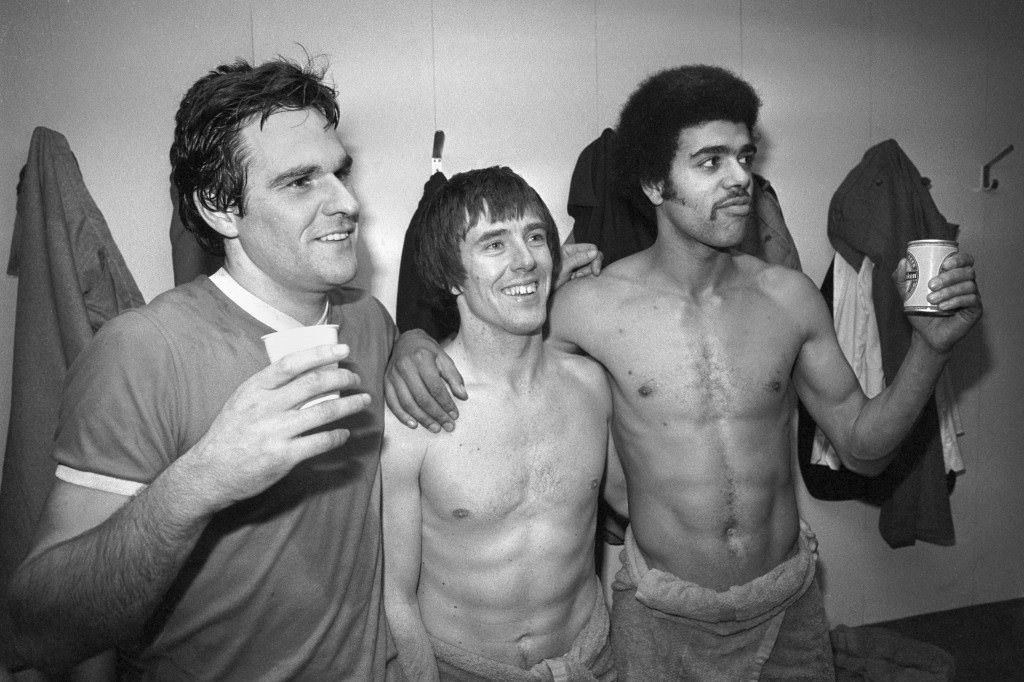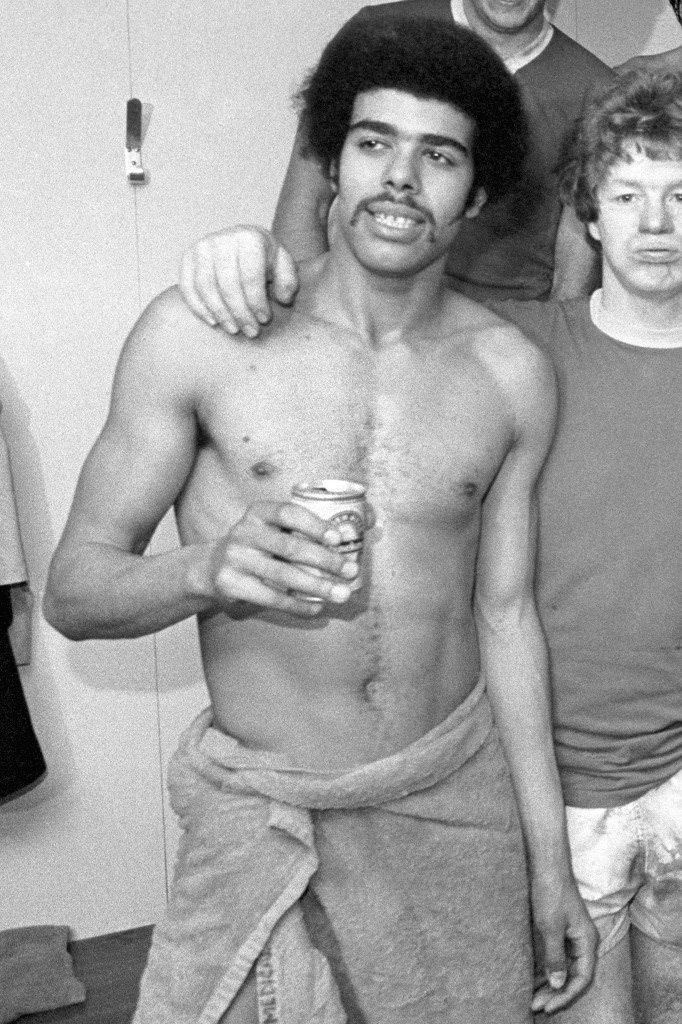Soccer changing rooms in the 1970s were functional spaces where teams prepared before a match and recovered afterwards. These rooms had benches for players to sit, hooks for their clothes and gear, and areas for cleaning up after playing. A common feature in many of these changing rooms was the presence of communal bathing facilities, often including a large team bath or several showers.
In the 1970s, the world of professional soccer sometimes felt more open and accessible than it does in the highly controlled environment of today. This extended to the changing rooms themselves. Journalists and photographers, including those working for news organizations, sometimes had access to areas that are now strictly private and off-limits to outsiders.
Photographers might be allowed into the changing rooms after a match, especially after a team had won. They were there to capture the raw emotions of the players, the exhaustion after a tough game, and the moments of celebration. These photographs provided fans with a behind-the-scenes look at their favorite teams and players.
The scene inside a changing room after a victory could be one of tired relief and happiness. Players would be taking off their muddy kits and getting ready to clean up. The air might be thick with steam from the showers or the large team bath as players used these facilities together to wash off the dirt and sweat from the match. Communal bathing was a standard part of the post-game routine in many clubs at that time.
Read more
Photographs captured players relaxing, tending to any minor injuries, or simply talking amongst themselves after the effort of the game. The communal bath was sometimes part of this scene, showing players recovering together. This level of access meant that moments often considered private today were sometimes documented by the press.
While this access allowed for candid and often interesting photographs, it also meant that sometimes individuals who were not part of the team were present in these private spaces. There were instances where people unauthorized to be in the changing or bathing areas were pictured with the players. Such situations could lead to official investigations or charges being brought against club staff or managers, highlighting the boundaries of what was considered acceptable access to these team areas, even in the less restrictive 1970s.


